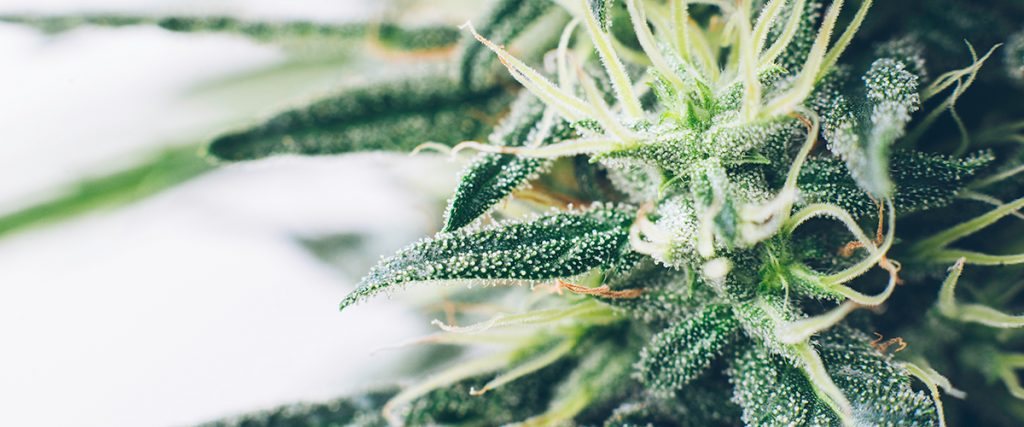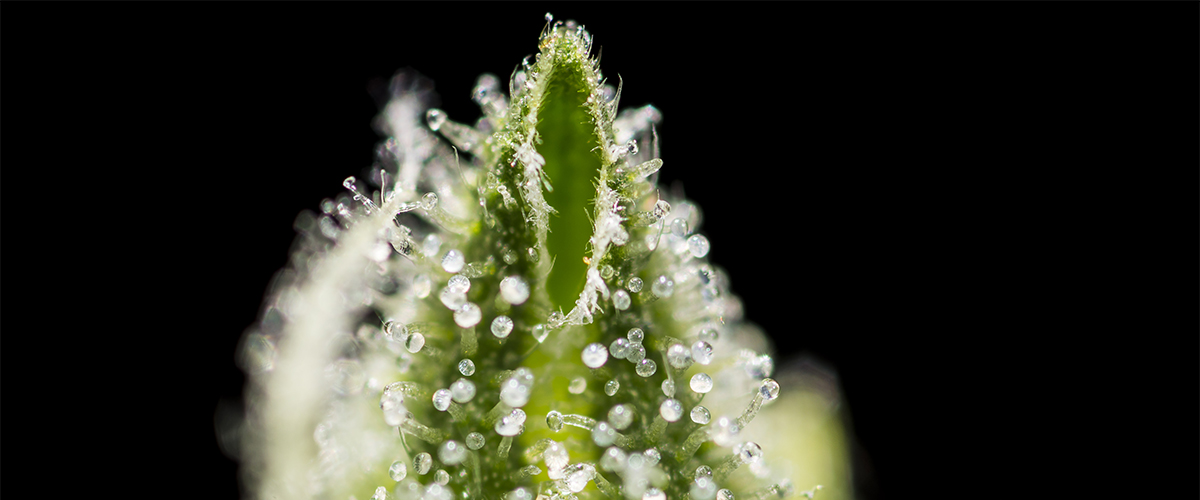Learn about terpenes and terpenoids, and how they play a significant role in the potential therapeutic applications of cannabis.
Terpenes and terpenoids are the compounds in cannabis that give the plants and their flowers their aromatic diversity and distinct flavors. They’re essential oils that are secreted in cannabis flower’s sticky resin glands, where cannabinoids like cannabidiol (CBD) and tetrahydrocannabinol (THC) are also produced.
While regular cannabis consumers take note of terpenes and terpenoids primarily because of their pungent, aromatic distinctions, the compounds offer more than an intense bouquet. According to a 2001 report from renowned researcher Dr. Ethan Russo, terpenes have wide-ranging therapeutic attributes.
Over 200 different terpenes and terpenoids have so far been identified in the cannabis plant, although they’re not unique to cannabis. They exist throughout the botanical world and are found in many other plants, herbs, and fruits. Common in the human diet, terpenes are recognized as safe to consume by the United States Food and Drug Administration.
Terpenes and Terpenoids: What’s the Difference?
Terpenes and terpenoids are essentially one in the same and the two terms are often used interchangeably. The difference between the two is that terpenes are organic hydrocarbons, while terpenoids contain additional atoms that have been altered during a process called oxidation, which occurs once cannabis has been dried and cured.
To simplify, think of terpenes as “wet” and terpenoids as “dried out.”
Why Terpenes and Terpenoids are Important
Like cannabinoids, terpenes bind to receptors in the brain to stimulate various effects and affect the chemical output of neurotransmitters like dopamine and serotonin. Among the wide-ranging effects of terpenes that researchers have so far discovered include:
- Reducing inflammation
- Relieving pain
- Aiding with sleep
Evidence also suggests that terpenes work with cannabinoids like CBD and THC to enhance their natural balancing properties in what’s referred to as an “entourage effect.”
The entourage effect, introduced in 1998 by Israeli researchers Shimon Ben-Shabat and Raphael Mechoulam, maintains that all the natural constituents found in cannabis – terpenes, cannabinoids, and natural other compounds – work together synergistically to magnify their beneficial properties. The theory suggests that isolated cannabis compounds aren’t as effective as when all the natural constituents work together harmoniously.

Most Common Terpenes Found in Cannabis
Each strain of cannabis has a unique terpene profile, producing its own distinct line-up and concentration of terpenes. Here’s a look at five terpenes that occur most commonly in the greatest concentrations in cannabis.
Myrcene
Described as having a musky, clove, or earthy aroma, myrcene is the most abundant terpene produced by cannabis, sometimes composing up to 50 percent of the plant’s terpene volume. Myrcene, or β-myrcene, produces what is considered the stereotypical smell of cannabis.
When myrcene levels in cannabis are high, they’re responsible for eliciting the common “couch-lock” euphoric effect, or a strong sense of sedation. A 2014 study also found evidence that myrcene has anti-ulcer properties.
Myrcene is commonly found in other plants such as:
- Mango
- Lemongrass
- Thyme
- Hops
- Eucalyptus
Limonene
Cannabis varieties that are high in the terpene limonene have a strong citrusy smell like orange or lime. Highly absorbed by inhalation, limonene promotes a general uplift in attitude and mood, and it assists in the absorption of other terpenes through the skin.
According to WebMD, limonene may block cancer-forming chemicals and kill cancer cells, though more research is still needed. Limonene is also found in:
The peels of citrus fruits
- Rosemary
- Juniper
- Peppermint
Pinene
There are actually two types of the terpene pinene — alpha and beta. The alpha variety, found in pine woods and balsamic resin, produces a scent of pine needles or fir. The beta type, found in a variety of herbs, smells like dill, parsley, rosemary, or basil.
Studies indicate that pinene possesses anti-inflammatory and bronchodilator effects. At least one study suggests pinene has anticancer activity.
Caryophyllene
The only terpene known to interact with the endocannabinoid system, caryophyllene produces a scent that’s been described as peppery, woody, or spicy.
Studies show that caryophyllene binds to the cannabinoid receptor 2 (CB2) to elicit an anti-inflammatory response. When administered with cannabinoids, particularly CBD, it’s shown to safely reduce chronic pain.
Caryophyllene is also found in:
- Thai basil
- Cinnamon
- Black pepper
Linalool
Found in over 200 plant species and most abundant in lavender, linalool has a floral aroma and has been known to promote calming, relaxing effects. It’s known best as a beneficial sleep aid and a precursor in the formation of vitamin E.
Studies also indicate that linalool may significantly reduce lung inflammation caused by smoking as well as potentially reverse the histopathological hallmarks of Alzheimer’s disease.
Learn More About Cannabis
Thousands of studies have been done examining the potential therapeutic benefits of cannabis. You can learn more about the many benefits of cannabis and medical marijuana by visiting our education page.






